
Free Slavic Music Generator Powered by AI
Turn text into high-quality Slavic music effortlessly – no login required!
music.toolTips
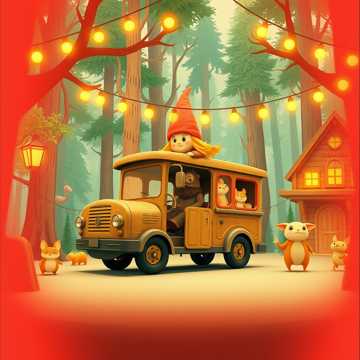
Выход Бабы Яги
A lively, Slavic folk-pop composition with playful instrumentation, comic timing, and an explosive chorus. The song conjures a whimsical atmosphere with a mix of traditional and exaggerated sounds, perfect for an animated, fun-filled setting.
02:40
2 hours ago
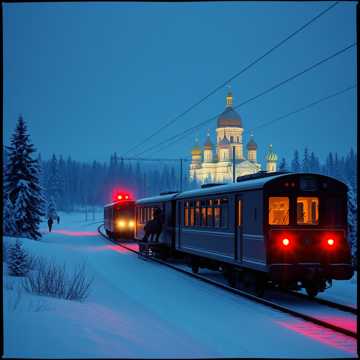
Интенсивные русские огни
Остинатные низкие струны и народные акценты создают напряжённый, героический поток, раскрывающий русскую атмосферу через мощные оркестровые всплески.
03:09
4 hours ago

лажа
A blend of rock, folk, and Slavic motifs, 'лажа' reflects on personal growth and the beauty of nature, accompanied by powerful instrumentals like pan flute and guitar solos. The song invokes the spirit of exploration and inner peace.
03:28
8 hours ago

лажа
The song 'лажа' blends nature imagery with a sense of freedom and self-discovery. Featuring diverse instruments like the pan flute and guitar, it tells a story of a journey through the wilderness, reflecting on dreams, pain, and personal growth.
03:19
8 hours ago
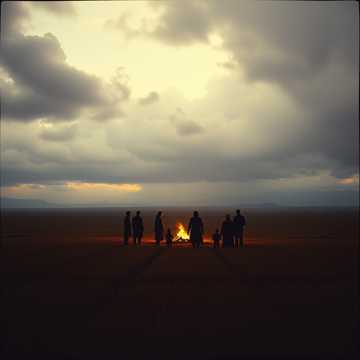
Наш русский народ
A powerful Slavic anthem that conveys the enduring strength and unity of the Russian people, embracing themes of resilience, family, and heritage through commanding vocals and dynamic orchestration.
03:57
8 hours ago
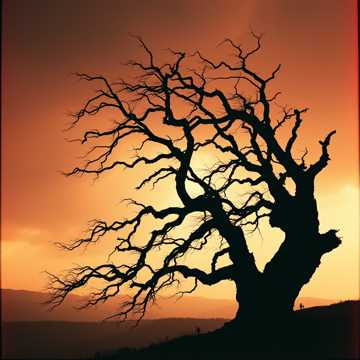
Падение Древа
A cinematic, instrumental piece blending Slavic choral traditions and orchestral grandeur. The song conveys a deep emotional journey, transitioning from mournful strings to a dramatic choral explosion, and closing with a single haunting vocal line.
02:10
8 hours ago

лажа
A vivid journey through nature, where the protagonist explores the wilderness with determination and joy. The song mixes rock and Slavic influences, blending deep emotional tones with an adventurous spirit, featuring elements like pan flutes and guitar solos.
03:51
9 hours ago

Дрожь По Телу
A euphoric, high-energy EDM track blending Slavic influences with bright synths, powerful bass, and a sax-driven drop. The song conveys excitement and passion, perfect for a night of dancing and celebration.
03:47
11 hours ago

Дівчинко моя, гарна квітка
Фолк-поп гімн про кохання, родинну єдність і радісне святкування, де голоси переплітаються у піднесеному весільному настрої.
02:54
12 hours ago

Northern Ashes
A brooding folk tableau that swells from hushed intimacy to storm-like catharsis, blending Nordic–Slavic colors through acoustic textures and dramatic dynamic shifts.
03:55
12 hours ago

Простые слова
A poignant song exploring love, fear, and vulnerability. Simple words become a bridge for emotional connection, set to a bright, Slavic pop backdrop. The track combines intimate moments with a soaring chorus and a tender bridge, creating a bittersweet emotional landscape.
03:17
16 hours ago

Саша на танке прорыва
This song portrays a soldier named Sasha driving a breakthrough tank, pushing forward through destruction with unflinching determination. It blends personal courage with urban warfare, exploring fear, heroism, and resilience in a harsh, gritty world.
02:50
17 hours ago

Тамилла
A reflective pop track about emotional vulnerability, hidden pain, and the desire to rescue someone trapped behind their own façade. The blend of bright synths and intimate vocals heightens its raw emotional depth.
03:05
18 hours ago

Грязный Гомель
A gritty, melancholic portrayal of life in Gomyel, blending raw memories and harsh reality with half-spoken, slurred vocals and gritty boom-bap beats.
03:24
19 hours ago
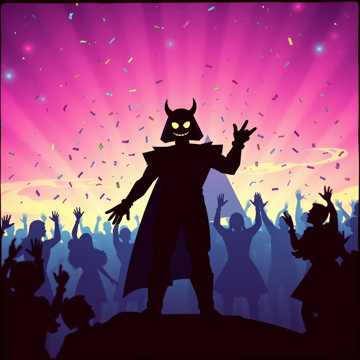
Игорь, мы приветствуем тебя
An energetic dance-pop anthem welcoming Igor with love and celebration. It features upbeat rhythms, folk-inspired percussion, and a soaring chorus that encourages joy, unity, and positive vibes.
03:25
19 hours ago

Ты жизнь моя, любовь моя
A passionate, high-energy Slavic dance-pop track expressing deep love and devotion. The song combines euphoric synths, catchy vocals, and infectious beats to create a thrilling dance anthem that explores the emotional intensity of love.
02:53
20 hours ago
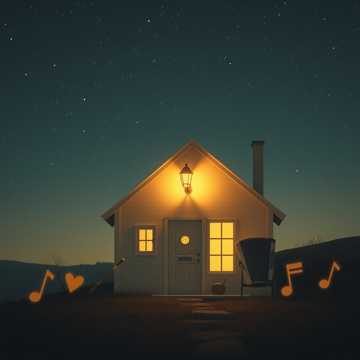
Над селом звезда горит
A warm and festive Slavic folk-inspired song with rich harmonies and instruments like guitar, accordion, and a children's choir. The track evolves from intimate solo vocals to layered choruses, delivering a joyful and uplifting atmosphere.
01:43
20 hours ago

Админшка от бога
A high-energy, comedic dance-pop track celebrating the chaotic life of a hospital admin. Featuring playful lyrics, punchy rhythms, and theatrical vocals, it invites listeners to dance and laugh through the madness.
02:55
Invalid date
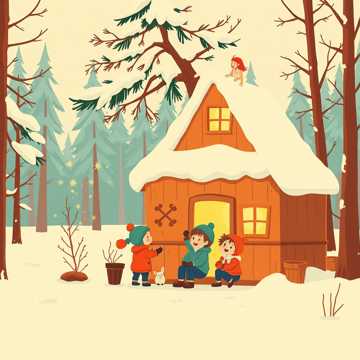
Приключения Дубовских
This cheerful, folk-pop song paints a lighthearted portrait of the quirky DUBOVSKY family. With playful storytelling, it captures everyday family adventures, filled with laughter, mischief, and love. A blend of humor, family warmth, and catchy rhythms.
02:55
1 days ago

Ядовитый воздух
Тревожная рок-баллада о душном, ядовитом пространстве между двумя людьми, потерявшими путь среди тумана, молчания и внутренней вины.
04:27
1 days ago
Introduction to the Slavic Music Tag: Definition and History
The Slavic music tag encompasses a rich and diverse category of music originating from the Slavic regions of Eastern and Central Europe, including countries such as Russia, Poland, Ukraine, Serbia, Bulgaria, and the Czech Republic. Slavic music is characterized by its unique blend of folkloric tradition, regional instruments, vocal styles, and emotional expression. Historically, Slavic music has roots in ancient tribal rituals, Orthodox Christian liturgical chants, and centuries of cultural interchange through empires and migrations. Over time, it evolved into multiple distinct genres ranging from traditional folk to contemporary pop and rock, while maintaining a core identity deeply tied to regional customs and linguistic heritage. Today, Slavic music enjoys global recognition and continues to influence genres around the world.
Sub-tags and Classifications within the Slavic Music Tag
Slavic Folk Music
Slavic Folk Music refers to traditional musical expressions passed down through generations, often performed during festivals, weddings, and seasonal rituals. It features traditional instruments such as the balalaika, gusle, accordion, and tambura. Each Slavic nation has its own folk styles, characterized by specific rhythms, harmonies, and storytelling lyrics.
Slavic Pop
Slavic Pop is a modern genre that blends traditional melodies with contemporary pop sounds. Artists from Russia, Ukraine, and the Balkans have developed distinct pop identities that incorporate local language, cultural themes, and modern production techniques.
Slavic Rock
Slavic Rock emerged prominently in the late 20th century as a fusion of Western rock and local Slavic influences. This genre often features politically charged lyrics, strong vocal expression, and integration of traditional motifs.
Slavic Choral and Sacred Music
This sub-tag includes choral pieces and liturgical compositions rooted in the Orthodox Christian tradition. Slavic sacred music is known for its rich vocal harmonies, deep bass lines, and reverent tone, often performed in cathedrals and spiritual settings.
Slavic Electronic and Experimental
A more recent sub-category, Slavic Electronic and Experimental music combines folklore and traditional elements with electronic production, ambient soundscapes, and avant-garde approaches, creating a unique and atmospheric listening experience.
Famous Artists and Iconic Works in Slavic Music
Goran Bregović
A celebrated Bosnian composer and musician known for blending Balkan folk music with rock and orchestral elements. His work with the band Bijelo Dugme and his solo compositions for film soundtracks have made significant contributions to the global awareness of Slavic musical traditions.
Ederlezi – Goran Bregović
This iconic song, originally a traditional Romani tune popular in the Balkans, was reinterpreted by Goran Bregović for the film 'Time of the Gypsies'. It features rich instrumental textures and an emotional build-up, symbolizing the celebratory yet melancholic essence of Slavic music.
Tatiana Bulanova
A prominent Russian pop singer who gained fame in the 1990s for her emotive vocal style and incorporation of Slavic melancholic themes into pop ballads. Her music captures the emotional depth and lyrical beauty typical of Slavic pop.
Molitva – Marija Šerifović
Winning the Eurovision Song Contest in 2007, 'Molitva' is a masterful blend of contemporary ballad structure and traditional Slavic vocal delivery. The piece is renowned for its emotional resonance, powerful vocal performance, and cultural authenticity.
Marija Šerifović
Serbian singer and winner of the Eurovision Song Contest 2007 with her song 'Molitva'. Her powerful performance showcased the emotional intensity and melodic complexity inherent in Slavic vocal traditions.
Katyusha – Traditional Russian Song
One of the most famous Russian wartime songs, 'Katyusha' exemplifies the Slavic folk tradition with its patriotic themes, simple melody, and evocative lyrics. It has been covered by countless artists and remains a symbol of cultural pride and resistance.
Baba Zula
While primarily known for their Turkish psychedelic sound, Baba Zula frequently collaborates with Slavic musicians and integrates Balkan rhythmic patterns and instrumentation, contributing to the fusion and evolution of Slavic experimental music.
Application Scenarios of Slavic Music Across Media
Slavic music is frequently used in film soundtracks to evoke specific emotional tones and cultural settings. Composers like Goran Bregović have popularized the use of Slavic motifs in cinematic contexts, especially in films depicting Eastern European life, history, or folklore.
Film Soundtracks
Slavic music finds a natural home in video game soundtracks, particularly in genres such as role-playing games (RPGs) and historical epics. Its traditional instruments and haunting melodies are ideal for creating immersive, culturally rich environments.
Video Game Background Music
Slavic music is a staple at cultural festivals, national celebrations, and folkloric exhibitions. It helps preserve and promote regional identities through live performances, dance, and communal singing.
Cultural Events and Festivals
Brands often use Slavic music in commercials to add a sense of tradition, authenticity, or emotional gravity. Its distinctive sound can create a strong connection with audiences, especially when targeting markets in Eastern Europe.
Advertising and Commercial Use